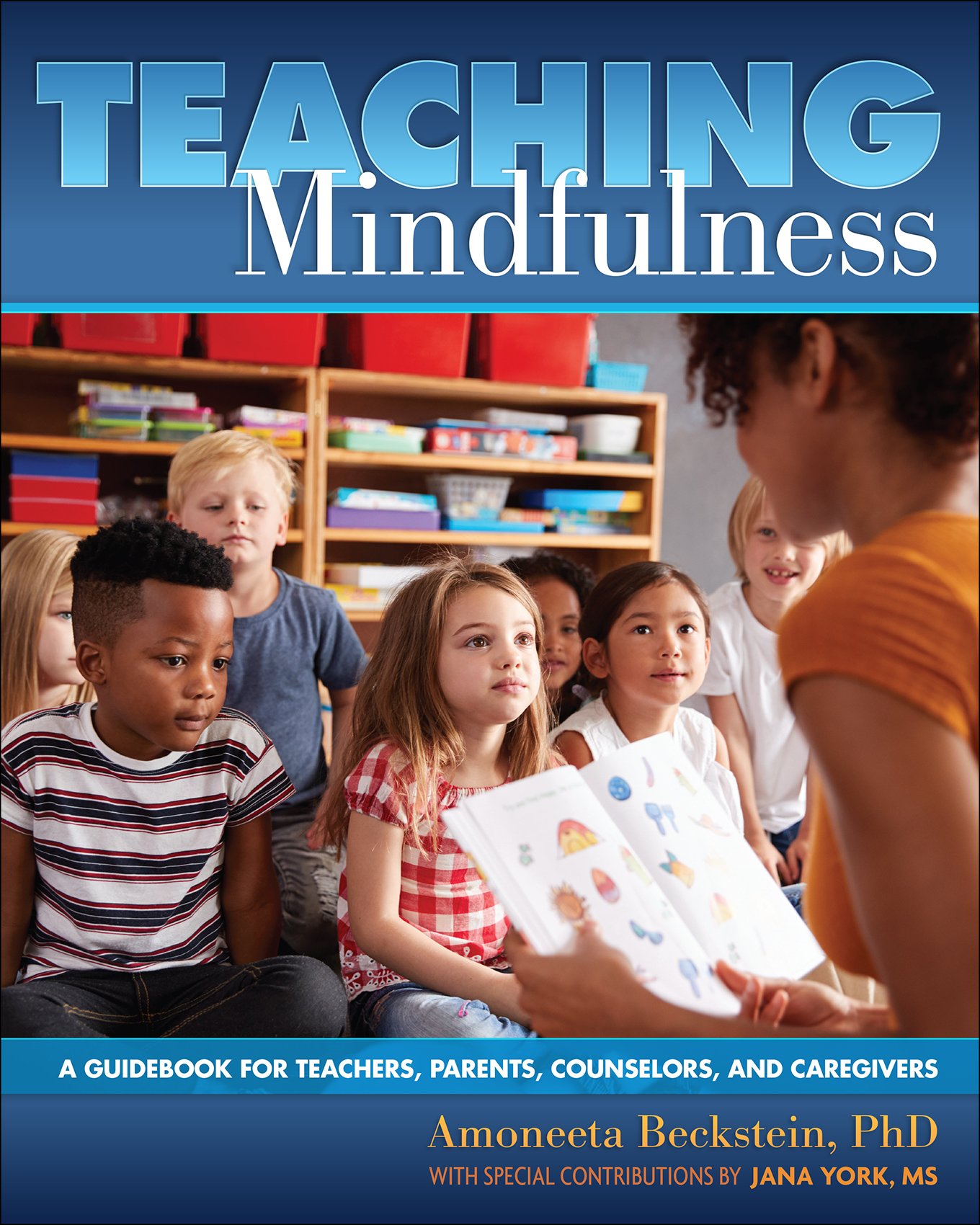 Image 1 of 1
Image 1 of 1


TEACHING MINDFULNESS - A Guidebook for Teachers, Parents, Counselors, and Caregivers
Amoneeta Beckstein with Jana York
Due to our fast-paced culture, combined with the influence of social media and the stress of global pandemics and climate change, children today face challenges unique to their generation. Mindfulness techniques can help them navigate this new terrain. Mindfulness helps students understand the power of choice, get in touch with their feelings, and sharpen their focus. It’s associated with improved academic learning, better social skills, and emotional intelligence. Kids who practice mindfulness feel more relaxed, more creative, and more self-confident. As a bonus, instructors teaching these techniques often develop their own mindfulness practice and reap the benefits.
This guidebook can be used in classrooms as well as home settings. Psychologist Amoneeta Beckstein and mindfulness educator and practitioner Jana York pooled their knowledge and experience to compile this eight-week program, with lesson plans based on the use of vowels (including Y for “You”) as a mnemonic device. Each “vowel of mindfulness” represents an idea that helps students develop present-moment awareness: Attention, Experience, Investigate, Observe, and Understand. Engaging activities and games help children put into practice the concepts they learned. When these fundamental mindfulness principles and practices are incorporated into curricula, children acquire a new skill set they can apply to every aspect of learning and continue to use throughout their lives.
Integration of Positive Psychology and Mindfulness to Boost Happiness in a Southeast Asian Context
Seattle Book Review, Nov. 2022
For adults, remembering what it was like as a kid can be difficult, especially depending on how many years ago that was. Many things have changed, including what was or wasn’t accepted, compared to today’s standards in society. Mindfulness and many mental health-related concepts weren’t known or spoken of as much as they are currently. In Teaching Mindfulness, professionals (teachers, counselors, and this includes parents/caregivers) are provided with resources and activities at their disposal to maintain a more calm and productive audience of children. The framework for the book revolves around the vowels of the alphabet – the letters needed to compose a legitimate word; each vowel represents a word attributed to a mindfulness attribute, followed by various activities to reinforce how to master each skill.
Teaching Mindfulness is enjoyable and understandable! Explanations and references are included, as well as additional signage to use around your area to further reinforce and remind your audience of what to be mindful of, with the help of bright colors and visually-stimulating pictures. Mindfulness isn’t something secluded to children, but the more kids who learn these skills will become future adults who will be a step ahead of others, which will benefit not only themselves but society as a whole as well.
ISBN:9781939053411
Page Count:120
Publisher: Book Publishing Co
Height:10.00
Width:8.00
Amoneeta Beckstein with Jana York
Due to our fast-paced culture, combined with the influence of social media and the stress of global pandemics and climate change, children today face challenges unique to their generation. Mindfulness techniques can help them navigate this new terrain. Mindfulness helps students understand the power of choice, get in touch with their feelings, and sharpen their focus. It’s associated with improved academic learning, better social skills, and emotional intelligence. Kids who practice mindfulness feel more relaxed, more creative, and more self-confident. As a bonus, instructors teaching these techniques often develop their own mindfulness practice and reap the benefits.
This guidebook can be used in classrooms as well as home settings. Psychologist Amoneeta Beckstein and mindfulness educator and practitioner Jana York pooled their knowledge and experience to compile this eight-week program, with lesson plans based on the use of vowels (including Y for “You”) as a mnemonic device. Each “vowel of mindfulness” represents an idea that helps students develop present-moment awareness: Attention, Experience, Investigate, Observe, and Understand. Engaging activities and games help children put into practice the concepts they learned. When these fundamental mindfulness principles and practices are incorporated into curricula, children acquire a new skill set they can apply to every aspect of learning and continue to use throughout their lives.
Integration of Positive Psychology and Mindfulness to Boost Happiness in a Southeast Asian Context
Seattle Book Review, Nov. 2022
For adults, remembering what it was like as a kid can be difficult, especially depending on how many years ago that was. Many things have changed, including what was or wasn’t accepted, compared to today’s standards in society. Mindfulness and many mental health-related concepts weren’t known or spoken of as much as they are currently. In Teaching Mindfulness, professionals (teachers, counselors, and this includes parents/caregivers) are provided with resources and activities at their disposal to maintain a more calm and productive audience of children. The framework for the book revolves around the vowels of the alphabet – the letters needed to compose a legitimate word; each vowel represents a word attributed to a mindfulness attribute, followed by various activities to reinforce how to master each skill.
Teaching Mindfulness is enjoyable and understandable! Explanations and references are included, as well as additional signage to use around your area to further reinforce and remind your audience of what to be mindful of, with the help of bright colors and visually-stimulating pictures. Mindfulness isn’t something secluded to children, but the more kids who learn these skills will become future adults who will be a step ahead of others, which will benefit not only themselves but society as a whole as well.
ISBN:9781939053411
Page Count:120
Publisher: Book Publishing Co
Height:10.00
Width:8.00
